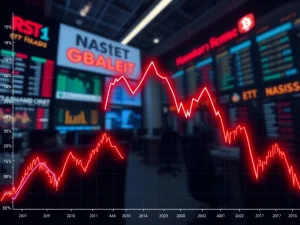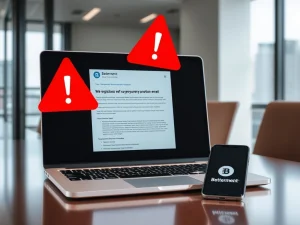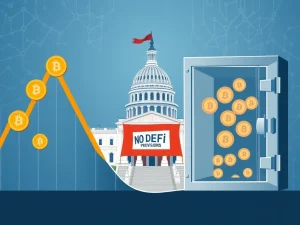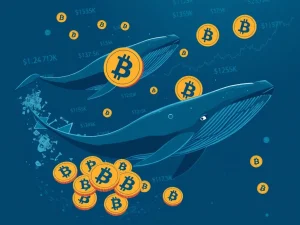XRP ETF Hopes Fuel Price Action: Is a **Crucial** $3.60 Breakout Imminent?
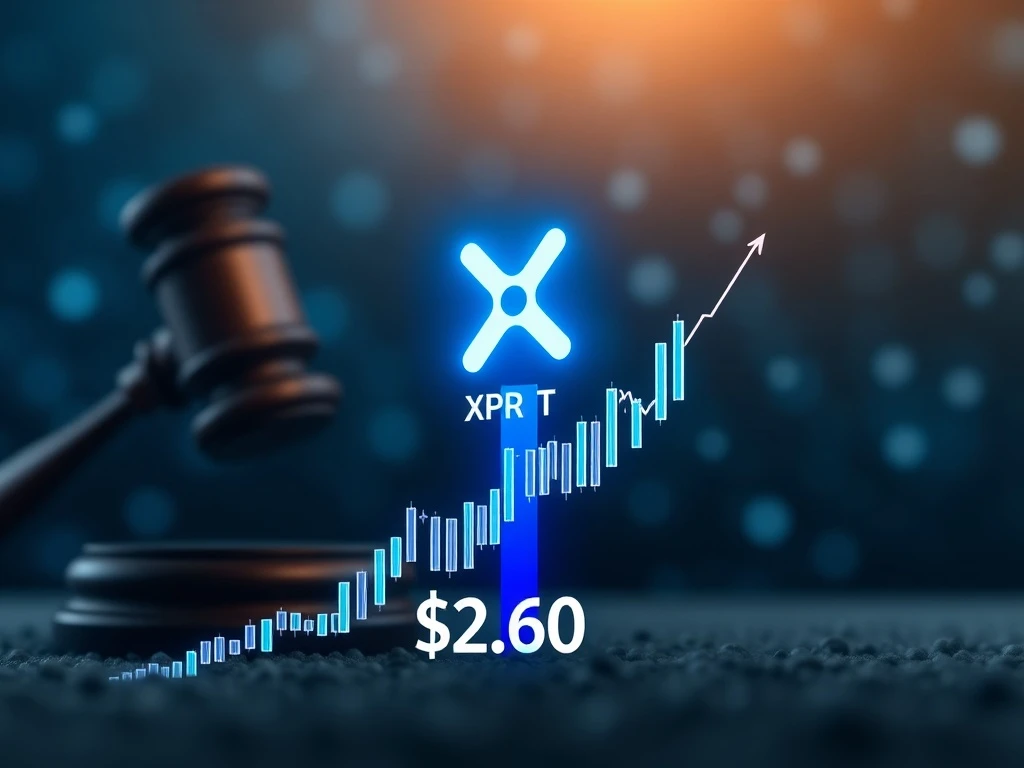
The cryptocurrency world closely watches **XRP price** movements. Recent speculation around a potential XRP Exchange-Traded Fund (ETF) approval in the United States has ignited significant market interest. Investors are eagerly anticipating whether this renewed enthusiasm can propel XRP past the critical $3.00 mark and towards the ambitious $3.60 target seen previously. This article delves into the factors influencing XRP’s trajectory, examining both the catalysts for growth and the underlying challenges that could temper a sustained rally.
The Rising Tide of XRP ETF Speculation
Speculation surrounding an **XRP ETF** has become a primary driver for the token’s recent price action. Bloomberg analysts now assign a high probability, up to 95%, for such an ETF’s approval. This optimism stems from the broader trend of institutional acceptance for digital assets, following the successful launches of Bitcoin and Ethereum ETFs. An SEC decision for XRP is anticipated in late October, keeping the market on edge. Moreover, REX-Osprey products, which combine ETF and ETN structures, could emerge even sooner. These products might follow a model similar to Solana Staking (SSK), bypassing the need for direct SEC approval. Such developments suggest growing institutional appetite for XRP exposure.
An approved XRP ETF would significantly open doors for traditional finance. It would allow a broader range of institutional investors to gain exposure to XRP without directly holding the asset. This ease of access could inject substantial capital into the **altcoin market**, specifically benefiting XRP. Historically, similar ETF approvals for other cryptocurrencies have led to considerable price surges. Consequently, many market participants believe an XRP ETF could provide the necessary catalyst for a significant upward trend, potentially pushing the XRP price beyond its current resistance levels.
XRP Price Action and Derivatives Market Insights
XRP faced a notable rejection recently after briefly touching $3.04. This level represented its highest point in nearly two weeks. However, the underlying demand for XRP futures has shown resilience. Data indicates a 5% increase in aggregate open interest from the previous month, reaching 2.69 billion XRP, or approximately $7.91 billion at current prices. This metric highlights a robust and sustained interest from traders.
More significantly, outstanding XRP futures contracts on the Chicago Mercantile Exchange (CME) surged by 74% over the past 30 days, hitting 386 million XRP. The CME is a regulated exchange, and this substantial increase signals stronger participation from professional fund managers and institutional market makers. Such activity often precedes significant price movements. While futures contracts always balance long and short positions, an increase in open interest often suggests heightened market engagement. Therefore, this trend provides a bullish signal for the **XRP price** outlook.
Despite this, monthly futures contracts also offer insights into leverage imbalances. Under neutral market conditions, XRP futures typically trade at a 5% to 10% premium above spot markets. This premium compensates for the longer settlement period. Currently, XRP monthly futures trade at a 7% premium. This figure suggests that leverage demand remains balanced, consistent with patterns observed over the past month. Therefore, while interest is high, the market is not yet exhibiting excessive speculative leverage, which could lead to sudden corrections. This balance indicates a healthier, more sustainable growth environment for XRP.
Ripple’s Ecosystem: Stablecoins and XRPL Adoption
Ripple, the company behind XRP, has made strides with its stablecoin, RLUSD. The stablecoin recently crossed the $700 million mark in assets, drawing considerable attention. However, a closer look reveals a nuance: nearly 90% of RLUSD’s supply was issued on the Ethereum network. This distribution creates minimal direct demand for the **XRPL adoption** ecosystem. The XRP Ledger aims to be a hub for digital assets, yet its native stablecoin struggles to gain traction there.
The stablecoin market remains highly competitive. Established issuers like Circle’s USYC and World Liberty’s USD1 boast deeper liquidity and broader integration. These entities present formidable competition for Ripple’s offering. For the XRPL to truly flourish, it needs to attract more native stablecoin activity and utility. Without significant demand for RLUSD on the XRP Ledger itself, the stablecoin’s growth does not translate directly into enhanced XRPL utility or demand for XRP.
Furthermore, many investors envision the XRPL evolving into a primary facilitator of international payments. They hope it will effectively replace the current SWIFT infrastructure. Others anticipate its rapid expansion in tokenization of Real World Assets (RWAs). However, current data from RWA.xyz paints a different picture. The XRPL accounts for only 2% of outstanding Real World Assets. This figure trails smaller, less established blockchains such as Avalanche, Stellar, and Aptos. This limited **XRPL adoption** in critical areas raises concerns about the longevity of any rally not solely driven by ETF speculation. For a sustained price increase, the XRPL needs to demonstrate more tangible utility and broader ecosystem growth.
XRP’s Performance Compared to the Broader Altcoin Market
XRP has shown muted performance when compared to the broader **altcoin market** capitalization. Since August, XRP has remained relatively flat. In contrast, the overall altcoin market advanced by 14% during the same period. This rally in other altcoins was supported by significant gains across various projects. For example, Hyperliquid (HYPE) saw a 32% increase, Solana’s SOL (SOL) climbed 28%, Cardano’s ADA (ADA) rose 19%, and Ether (ETH) advanced 18%. XRP’s most notable momentum in August followed the settlement of a years-long dispute between Ripple and the US Securities and Exchange Commission (SEC). This legal clarity provided a temporary boost, but the momentum has since waned.
The underperformance suggests that while the SEC lawsuit’s resolution was positive, it was not enough to propel XRP ahead of its peers in the absence of other strong catalysts. The broader altcoin market often moves in cycles, driven by various narratives and technological advancements. For XRP to catch up, it needs more than just legal clarity. It requires demonstrable growth in its ecosystem and compelling use cases that attract both developers and users. Therefore, investors must consider XRP’s relative position within the broader **altcoin market** when assessing its potential for future gains. The lack of organic growth on the XRPL continues to be a point of concern for some analysts.
The Path to $3.60: Challenges and Opportunities for XRP
The prospect of XRP reaching $3.60 cannot be entirely dismissed. An **XRP ETF** approval would undoubtedly provide a powerful impetus. This institutional validation could trigger a significant influx of capital, pushing the price upward. However, several factors temper this optimistic outlook. The XRPL’s modest $100 million in Total Value Locked (TVL) indicates limited decentralized finance (DeFi) activity. This low TVL suggests that the network’s utility beyond remittances and direct asset transfers remains underdeveloped. For a truly sustainable rally, the XRPL needs to foster a more vibrant and diverse ecosystem.
Furthermore, the competition in the crypto space is intense. Other blockchains are rapidly innovating and attracting users and developers with advanced features and robust ecosystems. For **Ripple** and XRP to maintain relevance, they must accelerate their efforts in key areas. These include enhancing developer tools, expanding partnerships, and fostering genuine **XRPL adoption** for a wider range of applications. Without these foundational improvements, any price surge driven solely by ETF speculation might prove fleeting. The market will eventually demand tangible utility and sustained growth to justify higher valuations. Therefore, while an ETF could ignite a short-term rally, long-term success hinges on fundamental ecosystem development.
Conclusion: Navigating the Future of XRP
The immediate future of XRP hinges significantly on the impending US **XRP ETF** decision. An approval could indeed unlock substantial institutional capital, potentially driving the **XRP price** towards the coveted $3.60 mark. However, investors must also consider the broader picture. The current state of **XRPL adoption** and tokenization metrics reveals weaknesses compared to its peers. While Ripple’s stablecoin efforts are notable, their impact on the native XRP Ledger remains limited.
Moreover, XRP’s underperformance relative to the wider **altcoin market** suggests that while legal clarity was beneficial, it requires more to sustain a rally. For a lasting and robust price increase, the XRPL needs to demonstrate more organic growth, increased utility, and a stronger competitive position within the broader crypto landscape. The journey to $3.60, while possible, will likely depend on a combination of institutional interest and significant fundamental improvements within the Ripple ecosystem.
This article is for general information purposes and is not intended to be and should not be taken as legal or investment advice. The views, thoughts, and opinions expressed here are the author’s alone and do not necessarily reflect or represent the views and opinions of Crypto News Insights.

